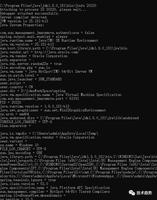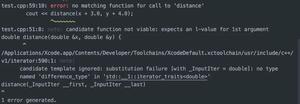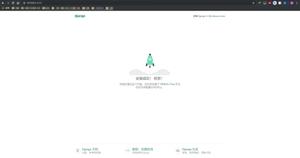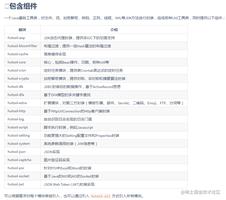使用South重构具有继承性的Django模型
我在想,如果以下迁移是可能的Django的南部和仍然保留的数据。
之前:
我目前有两个应用程序,一个叫做电视,一个叫做电影,每个都有一个VideoFile模型(在这里简化):
tv/models.py:
class VideoFile(models.Model): show = models.ForeignKey(Show, blank=True, null=True)
name = models.CharField(max_length=1024, blank=True)
size = models.IntegerField(blank=True, null=True)
ctime = models.DateTimeField(blank=True, null=True)
movies/models.py:
class VideoFile(models.Model): movie = models.ForeignKey(Movie, blank=True, null=True)
name = models.CharField(max_length=1024, blank=True)
size = models.IntegerField(blank=True, null=True)
ctime = models.DateTimeField(blank=True, null=True)
后:
因为这两个videofile对象是如此相似,所以我想摆脱重复并在一个名为media的单独应用中创建一个新模型,其中包含通用的VideoFile类并使用继承对其进行扩展:
media / models.py:
class VideoFile(models.Model): name = models.CharField(max_length=1024, blank=True)
size = models.IntegerField(blank=True, null=True)
ctime = models.DateTimeField(blank=True, null=True)
tv/models.py:
class VideoFile(media.models.VideoFile): show = models.ForeignKey(Show, blank=True, null=True)
movies/models.py:
class VideoFile(media.models.VideoFile): movie = models.ForeignKey(Movie, blank=True, null=True)
所以我的问题是,如何使用django-south做到这一点并仍然维护现有数据?
所有这三个应用程序都已经由南迁移管理,根据南文档,将模式迁移和数据迁移结合起来是不明智的做法,他们建议应分几步完成。
我认为可以使用这样的单独迁移来完成(假设已经创建了media.VideoFile)
- 模式迁移以重命名tv.VideoFile和movie.VideoFile中的所有字段,这些字段将移动到新的media.VideoFile模型中,也许重命名为old_name,old_size等
- 架构迁移到tv.VideoFile和movie.VideoFile以从media.VideoFile继承
- 数据迁移以将old_name复制到名称,将old_size复制到大小,等等
- 方案迁移以删除old_字段
在我完成所有工作之前,你认为这行得通吗?有没有更好的办法?
回答:
我确实尝试遍历了T Stone概述的解决方案,尽管我认为这是一个了不起的入门,并解释了应该如何做,但我遇到了一些问题。
我认为大多数情况下,你不再需要为父类创建表条目,即你不需要
new_movie.videofile_ptr = orm['media.VideoFile'].objects.create()不再。Django现在会自动为你执行此操作(如果你有非null字段,则以上内容对我不起作用,并给我一个数据库错误)。
我认为这可能是由于django和south的变化所致,这是一个适用于Django 1.2.3和south 0.7.1的ubuntu 10.10的版本。这些模型有些不同,但是你将获得要点:
初始设置
post1 / models.py:
class Author(models.Model): first = models.CharField(max_length=30)
last = models.CharField(max_length=30)
class Tag(models.Model):
name = models.CharField(max_length=30, primary_key=True)
class Post(models.Model):
created_on = models.DateTimeField()
author = models.ForeignKey(Author)
tags = models.ManyToManyField(Tag)
title = models.CharField(max_length=128, blank=True)
content = models.TextField(blank=True)
post2 / models.py:
class Author(models.Model): first = models.CharField(max_length=30)
middle = models.CharField(max_length=30)
last = models.CharField(max_length=30)
class Tag(models.Model):
name = models.CharField(max_length=30)
class Category(models.Model):
name = models.CharField(max_length=30)
class Post(models.Model):
created_on = models.DateTimeField()
author = models.ForeignKey(Author)
tags = models.ManyToManyField(Tag)
title = models.CharField(max_length=128, blank=True)
content = models.TextField(blank=True)
extra_content = models.TextField(blank=True)
category = models.ForeignKey(Category)
显然有很多重叠之处,因此我想将通用性分解为通用的后期模型,而只保留其他模型类中的差异。
新设置:
genpost / models.py:
class Author(models.Model): first = models.CharField(max_length=30)
middle = models.CharField(max_length=30, blank=True)
last = models.CharField(max_length=30)
class Tag(models.Model):
name = models.CharField(max_length=30, primary_key=True)
class Post(models.Model):
created_on = models.DateTimeField()
author = models.ForeignKey(Author)
tags = models.ManyToManyField(Tag)
title = models.CharField(max_length=128, blank=True)
content = models.TextField(blank=True)
post1 / models.py:
import genpost.models as gpclass SimplePost(gp.Post):
class Meta:
proxy = True
post2 / models.py:
import genpost.models as gp
class Category(models.Model):
name = models.CharField(max_length=30)
class ExtPost(gp.Post):
extra_content = models.TextField(blank=True)
category = models.ForeignKey(Category)
如果你想继续前进,首先需要将这些模型推向南方:
$./manage.py schemamigration post1 --initial$./manage.py schemamigration post2 --initial
$./manage.py migrate
迁移数据
怎么做呢?首先编写新的应用程序genpost,然后向南进行初始迁移:
$./manage.py schemamigration genpost --initial(我$用来表示shell提示符,所以请不要键入。)
接下来,分别在post1 / models.py和post2 / models.py中创建新类SimplePost和ExtPost(请不要删除其余的类)。然后也为这两个创建schemamigrations:
$./manage.py schemamigration post1 --auto$./manage.py schemamigration post2 --auto
现在我们可以应用所有这些迁移:
$./manage.py migrate让我们开始讨论,将数据从post1和post2迁移到genpost:
$./manage.py datamigration genpost post1_and_post2_to_genpost --freeze post1 --freeze post2然后编辑genpost / migrations / 0002_post1_and_post2_to_genpost.py:
class Migration(DataMigration): def forwards(self, orm):
#
# Migrate common data into the new genpost models
#
for auth1 in orm['post1.author'].objects.all():
new_auth = orm.Author()
new_auth.first = auth1.first
new_auth.last = auth1.last
new_auth.save()
for auth2 in orm['post2.author'].objects.all():
new_auth = orm.Author()
new_auth.first = auth2.first
new_auth.middle = auth2.middle
new_auth.last = auth2.last
new_auth.save()
for tag in orm['post1.tag'].objects.all():
new_tag = orm.Tag()
new_tag.name = tag.name
new_tag.save()
for tag in orm['post2.tag'].objects.all():
new_tag = orm.Tag()
new_tag.name = tag.name
new_tag.save()
for post1 in orm['post1.post'].objects.all():
new_genpost = orm.Post()
# Content
new_genpost.created_on = post1.created_on
new_genpost.title = post1.title
new_genpost.content = post1.content
# Foreign keys
new_genpost.author = orm['genpost.author'].objects.filter(\
first=post1.author.first,last=post1.author.last)[0]
new_genpost.save() # Needed for M2M updates
for tag in post1.tags.all():
new_genpost.tags.add(\
orm['genpost.tag'].objects.get(name=tag.name))
new_genpost.save()
post1.delete()
for post2 in orm['post2.post'].objects.all():
new_extpost = p2.ExtPost()
new_extpost.created_on = post2.created_on
new_extpost.title = post2.title
new_extpost.content = post2.content
# Foreign keys
new_extpost.author_id = orm['genpost.author'].objects.filter(\
first=post2.author.first,\
middle=post2.author.middle,\
last=post2.author.last)[0].id
new_extpost.extra_content = post2.extra_content
new_extpost.category_id = post2.category_id
# M2M fields
new_extpost.save()
for tag in post2.tags.all():
new_extpost.tags.add(tag.name) # name is primary key
new_extpost.save()
post2.delete()
# Get rid of author and tags in post1 and post2
orm['post1.author'].objects.all().delete()
orm['post1.tag'].objects.all().delete()
orm['post2.author'].objects.all().delete()
orm['post2.tag'].objects.all().delete()
def backwards(self, orm):
raise RuntimeError("No backwards.")
现在应用这些迁移:
$./manage.py migrate接下来,你可以从post1 / models.py和post2 / models.py中删除现在多余的部分,然后创建schemamigrations以将表更新为新状态:
$./manage.py schemamigration post1 --auto$./manage.py schemamigration post2 --auto
$./manage.py migrate
就是这样!希望所有这些都能奏效,并且你已经重构了模型。
以上是 使用South重构具有继承性的Django模型 的全部内容, 来源链接: utcz.com/qa/407323.html









